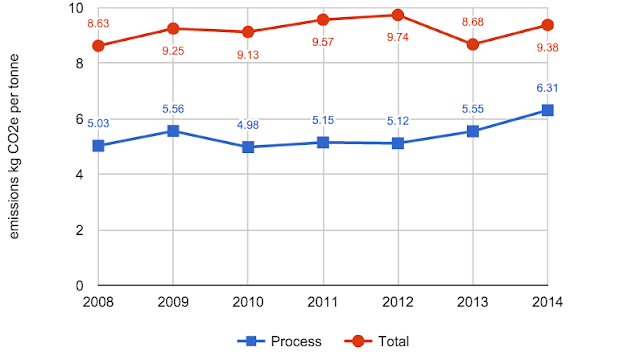noun... to say that you agree with something but do nothing to support it
Many would argue that climate change is the biggest threat that humanity faces.
Indeed, DCC states in its draft Minerals Plan that:
One of the biggest challenges facing Devon’s communities and environment, together with the wider world, is climate change driven by global warming. It is generally accepted that the main cause of global warming is human activity producing increasing concentrations of ‘greenhouse gases’, notably carbon dioxide in the atmosphere. As well as resulting in changing temperatures, climate change is also predicted to have a range of other consequences including increased frequency of extreme weather events, changing global patterns of weather and rising sea levels. 3.4.1
Devon's new Minerals Plan even pledges to do something about it:
Mitigation of and adaptation to climate change is a key consideration and statutory duty for the Devon Minerals Plan, and will be a cross-cutting theme for the Strategy. In particular, the spatial pattern of minerals development and the safeguarding of rail and water transport infrastructure will influence the distances that minerals are transported by road, while the management and restoration of mineral sites are capable of delivering positive measures for flood water management and habitat creation. 2.2.4
One of the first planning applications for a new quarry in Devon to be determined under this Plan - emerging or otherwise - is likely to be one of the most CO2 polluting: 1.2 million HGV miles just to transport the as-dug material for processing - before any onward sales distribution. It will be interesting to see what DCC and its new Minerals Plan will do about that? If the DMC meeting last month was any guide, then not very much.
What about the polluters themselves? Aggregate Industries’ parent, now LafargeHolcim after Holcim's takeover of Lafarge, says:
The 21st century will be defined by the challenge of climate change, in which the construction sector can play a key role. For LafargeHolcim, this global challenge requires a collaborative response that goes beyond our ambitious efforts in own [sic] operations. The Group is committed to reducing CO2 emissions across the entire construction value chain.
We have written about Aggregate Industries on climate change before, and how AI says:
We have long recognised the consequences of CO2 emissions and how both the manufacture of our products and their use in the built environment contribute to climate change... there is a real focus and drive to minimise the environmental impact of all we do.
Admirable words - ambitious efforts, real focus and drive - but what's the reality? For AI:
In 2013 our total process carbon emissions were 393,087 tonnes CO2eIn 2014 our total process emissions increased to 420,132 tonnes CO2e
Not to worry though, because the company has a plan:
By 2016 we will reduce process carbon emissions by 20% on 2013 levels in absolute terms.
The trouble is, AI said the same thing last year:
By 2016 we will reduce process carbon emissions by 20% on 2012 levels in absolute terms.
In fact, as far back as 2008:
Carbon remains a key focus for both us and society... We continue to work towards our 2012 target of 20% reduction per tonne of production from the 2008 verified baseline.
And how's AI doing? Look at the figures and judge for yourself:
AI would have you believe that:
For many years we have had our own CO2 reduction targets driven by a number of factors: Security of our energy supply, reducing the risk and exposure to unsustainable fossil fuels. Reducing the embodied CO2 impact of our products. Sites operating efficiently cost less to operate, and suffer fewer breakdowns. Legislation including Carbon Reduction Commitment Energy Efficiency Scheme (CRCEES), European Union Emissions Trading Scheme (EUETS)...
But look at the EU ETS civil penalties, and see how many times AI has failed to comply with legal requirements.
Does this look like a company that's serious about climate change? Or is it, as with the planning applications for Straitgate and Blackhill, that AI can't get its head around CO2 and that there's a huge mismatch between its words and the reality?
.@marksandspencer have committed to becoming a 'zero carbon business'. Who else do you know who's taking action for our planet? #ShowTheLove— WWF UK (@wwf_uk) February 11, 2016
